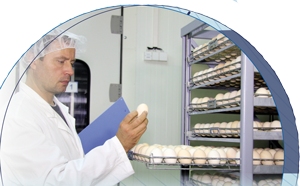Hatchery
Quality chicks born in the hatchery: care and monitoring that make a difference
To read more content about aviNews International March 2022
Hatchery
To read more content about aviNews International March 2022
Content available at:
Português (Portuguese (Brazil)) العربية (Arabic)

Approximately one-third of the broiler’s life is spent in the hatchery. Therefore, it is crucial to know all the factors that can influence the embryo’s development to control them and minimize production losses.
According to Oviedo-Rondón 2013, the hatchery is where companies can have greater control over processes to ensure good productivity and economic results, as the variability on the farms is much more difficult to control, and this characteristic should be taken advantage of.
Several factors can influence the incubation yield and chick quality. These factors can be divided into:
Briefly, we will address these main factors below.
PRE-INCUBATION FACTORS
Management on the broiler breeder farm

The production of quality eggs is essential for the proper development of the embryo.
According to Patrício (2013), a quality egg is free from microorganisms, with good shell quality, without cracks or deformities, and fertile.
The production of eggs that are fertile depends solely and exclusively on the farm.
Fertility is influenced by:

Regarding egg contamination, some management practices can be adopted on the farm and in the hatchery to reduce the microbial load.
The egg disinfection procedure up to two hours after laying must be carried out without fail, respecting all controls such as: